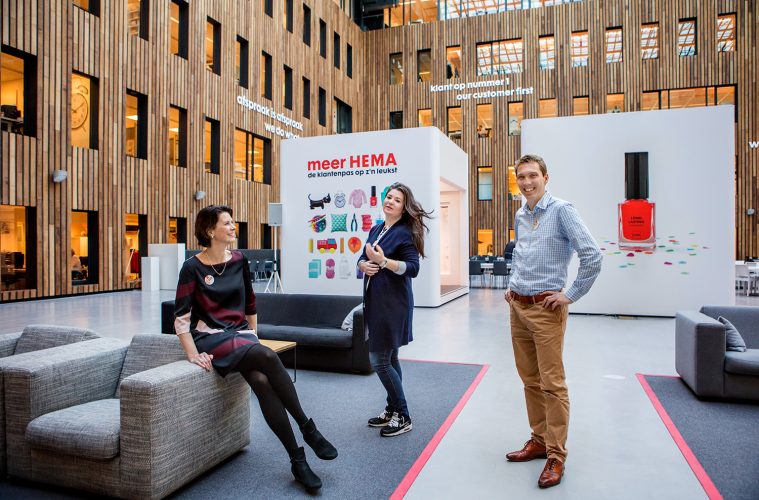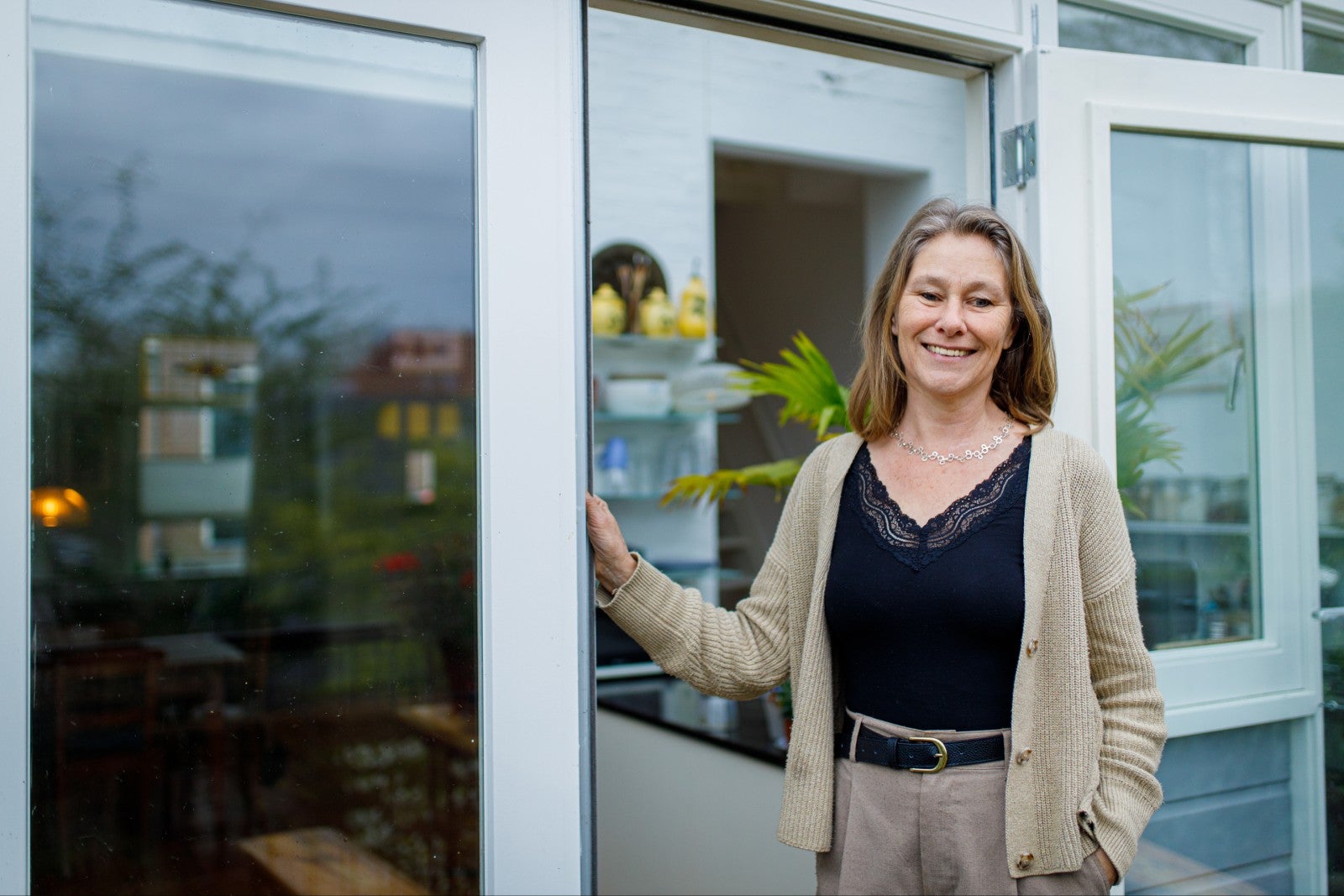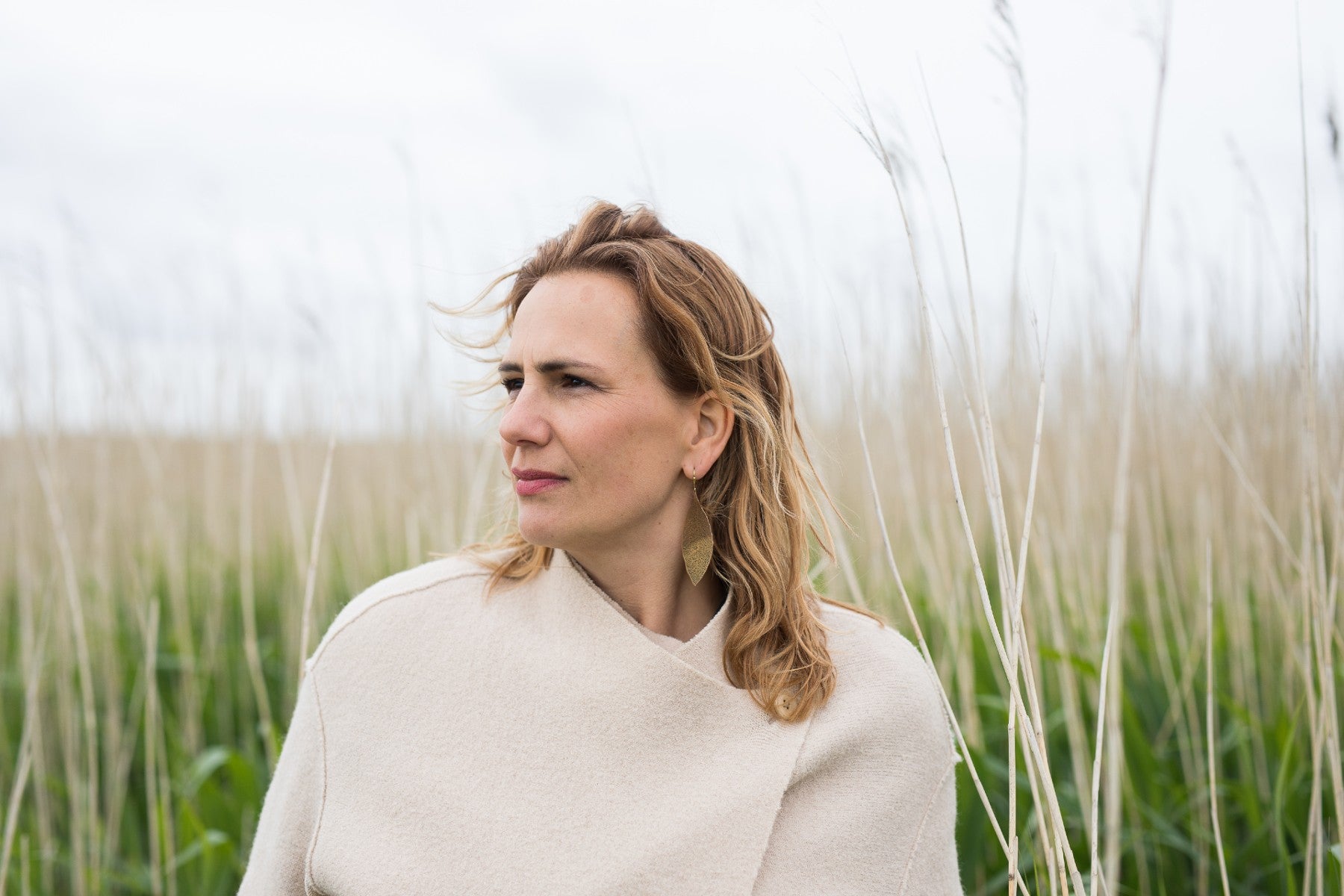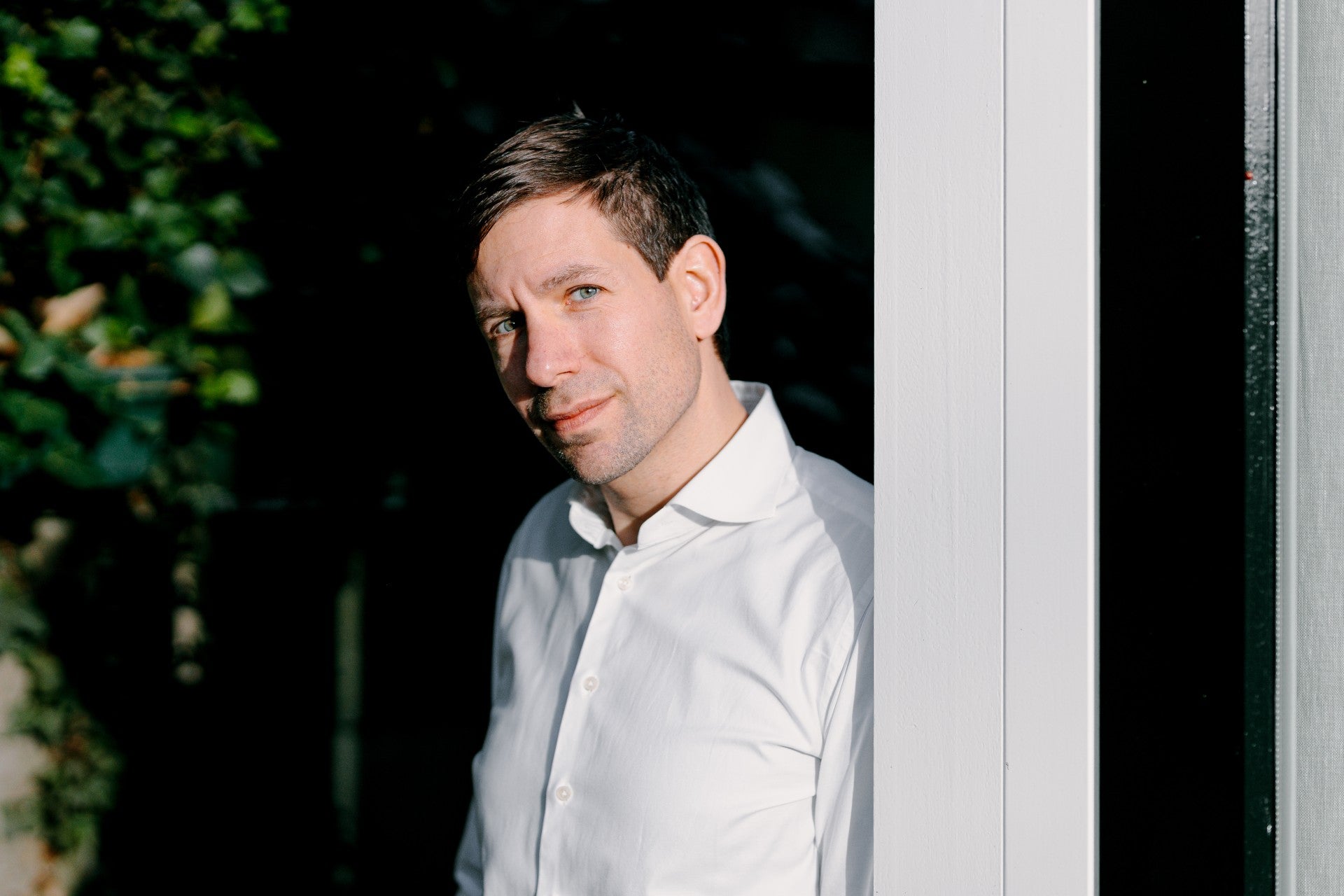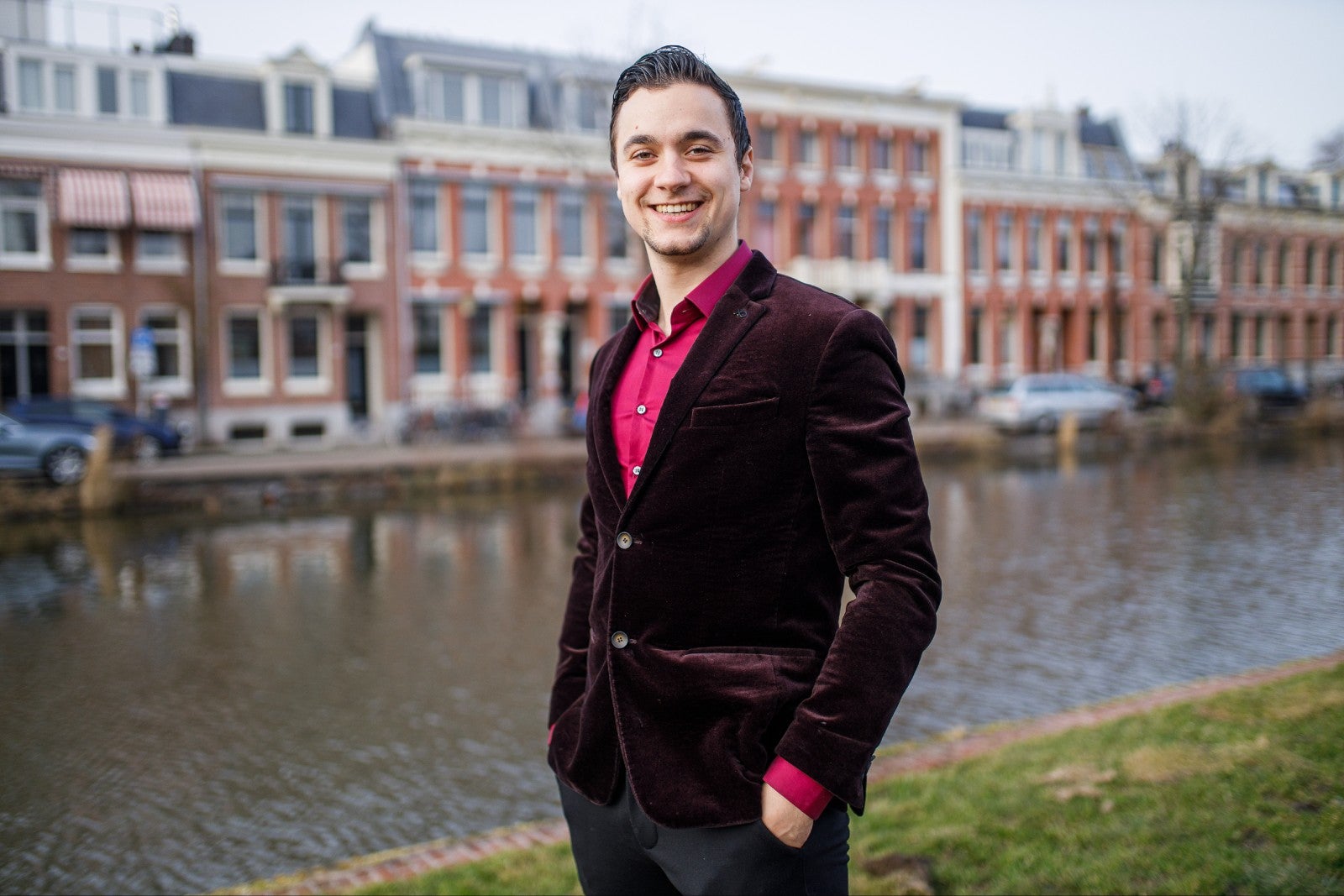I only miss the HEMA. That is the famous title of a book full of stories of Dutch people living abroad. When I spent a few months living in Paris a few years ago, that thought regularly went through my head, because where in the city could I find makeup, nylons, kitchen supplies and gifts in a single shop, without paying an arm and a leg? Today, you can find HEMA shops all over Europe, but it is still an icon of Dutch culture. At the headquarters in Amsterdam, I asked three VU alumni what it is like to work for HEMA.
Jan Eeken did a Master’s in Culture, Organization and Management. Today, he works as Operation Support Project Manager. “I make sure that everything runs better and more efficiently in the shop, so that the employees can save time on unnecessary activities. I also focus on the customer experience: what can we do to make the customers feel more welcome?”
Suus Lodewijks (1989) didn’t complete her Bachelor’s in Criminology at the VU, because she knew that she wanted to work at the HEMA. “I’m in training to be a franchise holder. My mother owns the franchise in Zutphen, and I want to take over from her.”
Saskia Sabel (1971) holds a Master’s in Econometrics, and works as Consumer and Business Intelligence Manager: “My team looks for explanations for the development of HEMA, for example by identifying what happens in the market, what competitors are doing and what motivates the consumers. To that end, we collect information in a variety of ways. We work together with market research agencies, and we ask our own in-house HEMA customer panel questions. We then provide our clients with recommendations based on the results. The client is often management, but we also conduct research for shops or for the Product Development department.
‘One day I’m deep into makeup with our consumers, and the next day I dive into the photo album service’
“My work is very diverse: one day I’m deep into makeup with our consumers, and the next day I dive into the photo album service or I evaluate customers’ reactions to the new shop layout. I spend more than half of my time in meetings with colleagues or agencies to discuss the results of our research or what we should research next, and how we should do it. I spend the remainder of my working hours preparing for meetings or providing feedback on our research from my desk. Since we work for so many different products and different countries, every day offers something new to discover.”
How did you all end up here?
Lodewijks: “HEMA is in my blood. My grandpa started the franchise in Zutphen in 1960, and my mother took over from him more than 30 years later. I spent a few years at university, but during my last year I helped my mother give the shop a face-lift, and I really enjoyed it. So I thought: why should I finish my studies? I already know what I want to do.”
Eeken: “For my previous employer, Dutch, I performed two assignments at the department were I work now. Both sides were pleased with my work, and the manager here informed me of a job opening when it became available.”
Sabel: “I also came to work at HEMA through contacts. Before this, I worked at V&D, and had some contacts at HEMA through that retailer, so I heard about a new job opening as soon as it became available. I think that HEMA gets most of its employees through contacts like that. The retail world is relatively small in the Netherlands.”
Why did you all want to work here?
Eeken: “HEMA is a consistent, yet attractive brand. It’s really unique to be able to be a part of that. Everyone has something of our products at home, and it’s always good for fun conversations at parties. Everyone has had positive experiences with HEMA.”
Sabel: “You never have to explain where you work. As soon as you mention the name, everyone says: ‘Oh, HEMA! You know what I think about the HEMA?”’
Lodewijks: “I’ve had a lot of other jobs, but I don’t see any options other than HEMA for the future. This shop is intertwined with my family: my niece and her husband want to take over several locations, and a cousin has a location in Kampen. In Zutphen, people don’t know me as Suus, but as ‘the girl from the HEMA’. I’m really proud of that!”
‘Super normal. That’s a real HEMA concept, and it accurately describes the atmosphere.’
How would you all describe the atmosphere?
Eeken: “It’s very pragmatic. Lines of communication are short, and decisions are implemented very quickly. The organisational structure is also very horizontal, especially since we got the new CEO. Since then, management has been spread throughout the building, instead of separated on an upper floor.
Lodewijks: “And everyone is on a first-name basis. The CEO is just Tjeerd to us. That suits HEMA’s down-to-earth attitude.”
Sabel: “Super normal. That’s a real HEMA concept, and it accurately describes the atmosphere.”
Eeken: “We also have lots of contact with the shop floor. Two times per year, every employee spends one or two days working in one of the shops. That way, you can see if what you come up with in the office actually works in the shop. That always results in new improvements.”

